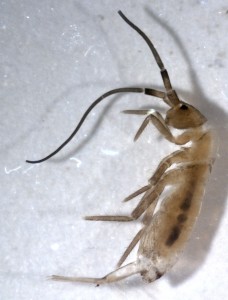Lichens are fundamental in the development of many ecosystems, and in some areas can provide food for some relatively large organisms. They are often intrinsically linked with primary succession, being the pioneering life forms that can create soil, by actively degrading rock, and releasing the minerals to other species. In addition, through their symbiosis and then their decay, they are also adding carbon and nitrogen to these new soils. They also have roles in secondary succession, especially where the top soil has been removed, only allowing some of the toughest plants to colonise, such areas in the UK are represented by Heathland and Chalk Grassland. Although, the lichen species best adapted to the environment, is always determined by the substrate.
Their symbiosis is impressive, and probably the most effective in nature, having allowed them to colonise the entire planet. As a result, it has been estimated that 8-10% of terrestrial ecosystems, are dominated by lichens (Nash, 2010). The lichen propagules are transported via air, water and animals, and the spores are often physically expelled by the lichen, to be dispersed within their environment. Even in the initial stages of pioneering an environment, a number of species have adapted to utilise the lichen as a food resource, including, Collembola (springtails), see image 1, Neuroptera (lacewings) and Lepidoptera (more specifically moths).

Image 1 Showing a Collembola with large sprung tail and 4 segmented antennae © Justin Groves The University of Reading
Slugs and snails are also known to be highly efficient at eating lichen, however, as with the invertebrates, molluscs help spread the propagules of lichens throughout the environment. Lichens even support large animals such as the Reindeer/Caribou (Rangifer tarandus) of the Arctic, where just one species of lichen such as (Cladonia rangiferina), can dominate hundreds of thousands of hectares!
Lichens are majorly affected by environmental pollutants, such as sulphur dioxide and hydrogen fluoride, that disperse in the atmosphere. The result in the UK, is that there have been declines around urban areas, and on the downwind side of major polluting sources, such as coal-fired power stations. This can lead to major consequences for the wildlife higher in food chains, and for those who rely on them for nest materials, and the invertebrates that are associated with them. Therefore, the health of lichen populations can be used to determine the abundance of other species, and the health of a habitat or ecosystem. Lichens are also highly resistant to extremely high levels of radiation and can be used to track radioactive pollutants that have entered the atmosphere across the globe.
The air in Reading suffers from moderate pollution at present, from molecules such as sulphur dioxide –lead in the atmosphere, taken from The Department for the Environment, Food and Rural affairs (Defra) 2010 Air pollution report. Although, compared with the past 50 years, no doubt, atmospheric pollutants excluding carbon dioxide, have decreased significantly, due to pollution reducing technologies in car-power stations. As a result, it is likely that the lichen community in Reading and on Whiteknights Campus is recovering.
For British lichens, please take a look at The British Lichen Societies web page.
Or take a look at the following publications:
Nash III, H.T., 2010. Lichen Biology. 2nd ed. New York: Cambridge University Press
Gilbert, O., 2000. Lichens. London: HarperCollins
Purvis, P., 2000. Lichens. London: The Natural History Museum
Duncan, U. K. and James, P.W., 1970. Arbroath: T.buncle & CO. Ltd.
